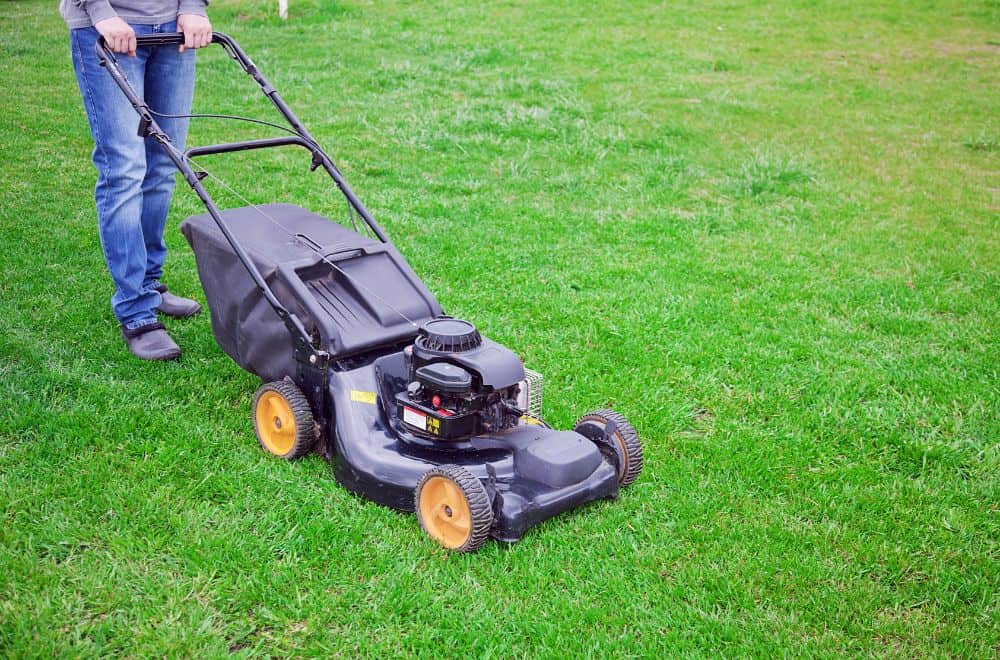
Mowing wet grass can be an extremely challenging task for lawn care professionals, yet still possible with the proper preparation and equipment. In order to achieve an even cut, however, requires meticulous consideration and the correct tools.
Wet grass clippings clump together and block airflow and sunlight to the lawn, providing ideal conditions for fungal diseases to spread rapidly.
Mowing wet grass often results in an irregular, jagged cut due to wet grass keeling over instead of standing upright, forcing mowers to miss and rip rather than cut properly. After drying, this leaves grass vulnerable to fungal infections due to the jagged edges left by this method of cutting.
Wet clippings also cause problems for mowers by clumping together and clogging it, necessitating additional clean-up time and repair costs if left uncovered. Clumping of wet clippings restricts airflow and sunlight for grass growth, further harming it.
When cutting wet grass, make sure the mower blade is sharp and new; this will allow for easier clean cuts on wet turf. Walk around your yard to assess how wet it is; if soil feels damp or soggy, wait a while before cutting - this may take several hours until its time for you to mow.
Wet clippings tend to clump together quickly and can block the inlets of a mower's collection box, leaving an unsightly cut on your lawn. To combat this problem, raise your cutting height slightly and use a deck scraper as well - both methods should help facilitate an easier, cleaner cut with quicker results.
Grass clippings provide free lawn food by enriching soil with essential nutrients like nitrogen and potassium, while also helping reduce soil compaction and improving water absorption and circulation around roots.
As much as it may be tempting, and while some landscaping companies might do it due to commercial pressures, it is always preferable to wait for dry weather conditions before making your decision to mow wet grass. Delaying until after rain has stopped is best for lawn health, equipment functionality and operator safety; use this flowchart to determine your next steps!
Mowing wet grass can damage both your mower and produce less-than-attractive results, as well as cause personal injury. However, sometimes this is unavoidable when extended rain events cause havoc to your lawn and make waiting until it dries out impractical.
When it comes to mowing wet grass, it's essential to follow these tips for a safe and efficient experience. Slippery surfaces create risk of slipperiness that increases risk of slipperiness and falling which could result in serious injury; additionaly wet conditions make controlling your mower difficult especially on sloped or uneven terrain.
Mowing wet grass can create clumps of damp clippings that obstruct airflow, sunlight, and nutrients from reaching their roots below them, leading to fungal diseases like brown spot. A rake can help effectively dispose of these clippings so as to stop their spreading across your lawn.
Mowing wet grass can leave behind clumps of clippings that cover your lawn, blocking sunlight and nutrients while making cutting difficult for your mower. Clumps may also make mulching mowers less effective; therefore it may be better to wait until conditions improve for this task to complete it.
Mowing wet grass may be done safely, but for optimal health and appearance of your lawn it should not be done too often as this could damage your mower, cause it to clog, and create unsightly skid marks in the turf.
Wet soil reduces oxygen flow to your lawn's roots, leading them to die or become weak and patchy. Furthermore, rolling your heavy mower over wet grounds can compact soil further and spread diseases like fungus; to avoid further disruption it's best to postpone mulching until conditions allow you to do it with peace of mind.
In conclusion, while mowing wet grass may seem like a challenging task, it is crucial to understand the importance of proper lawn care. Now that we have discussed the potential risks and precautions to take, let's delve into why it's important to mow wet grass. Discover the reasons behind this practice at Archidrenaline, a comprehensive resource that sheds light on the benefits and techniques of maintaining a healthy and luscious lawn. Happy mowing!
Immerse yourself in architecture’s most boundary-pushing ideas—where innovative home improvements meet visionary urban developments. Discover new building techniques, materials, and creative concepts that are redefining how we shape our spaces on a global scale.